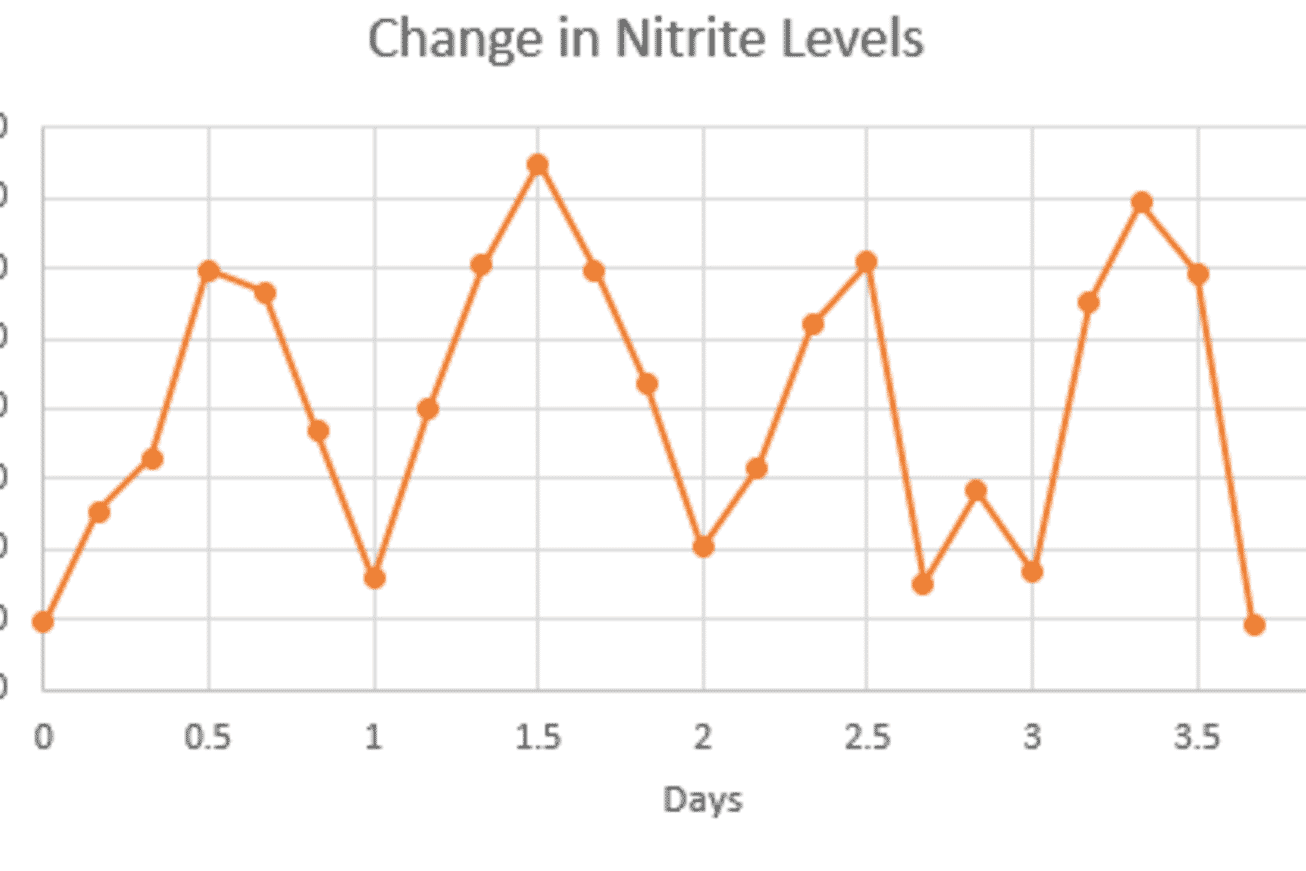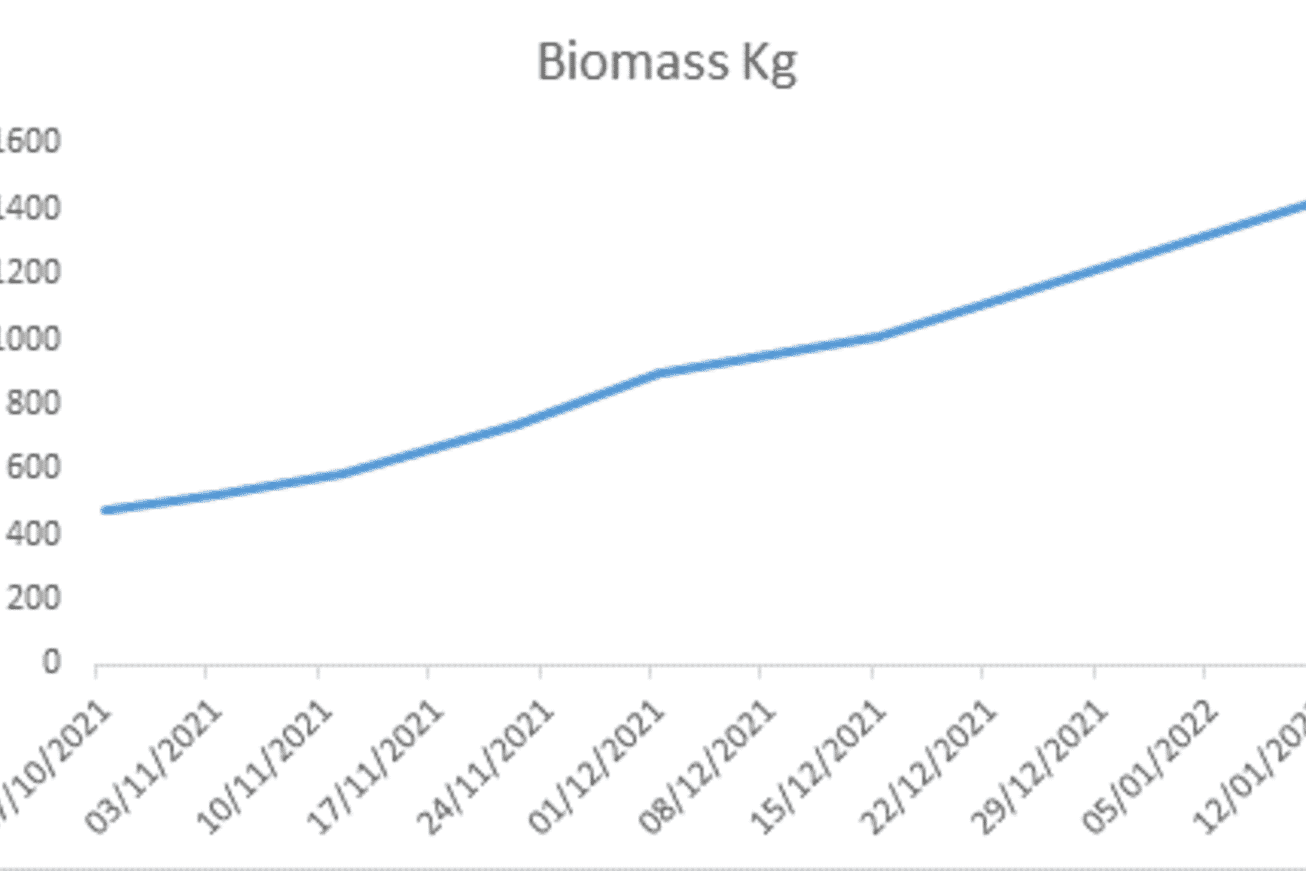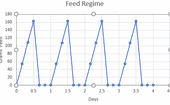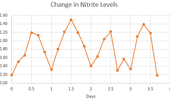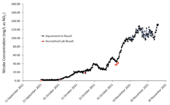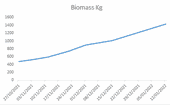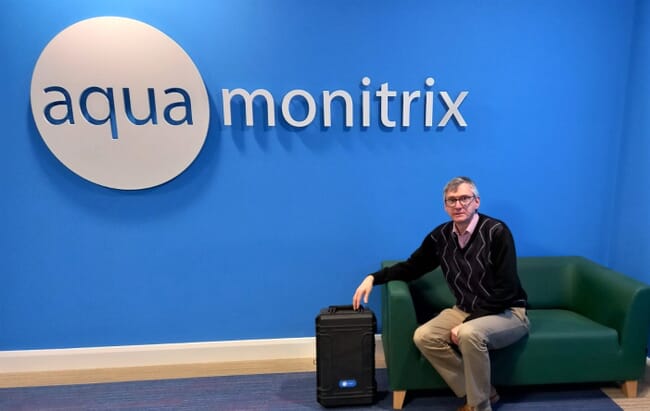
Can you provide a brief overview of your device and how it was developed?
Aquamonitrix is a new breed of real-time nitrite and nitrate analyser we introduced to the market in 2021. It fulfils an unmet need for an autonomous, real-time analyser that can measure nitrite and nitrate with high accuracy and specificity in recirculating aquaculture systems (RAS).
This empowers RAS managers to better supervise and manage the nitrogen cycle. The availability of high-resolution, real-time monitoring allows operators to avoid poor water quality issues, unnecessarily high water-exchange-rates or other system shocks that stress fish and reduce feeding. In a nutshell, it allows a far more precise balance to be achieved between maximising feed rates and optimising water quality, with the end game of delivering higher feed conversion efficiencies and larger, healthier fish.
When and why did you realise its potential for the aquaculture sector?
Initially, our key target markets were the wastewater, drinking water and environmental sectors. Coming from the environmental space, we were well aware of the damage caused by nitrate in aquatic and marine systems in terms of eutrophication and algal blooms and of the acute toxicity of nitrite to almost all living creatures.
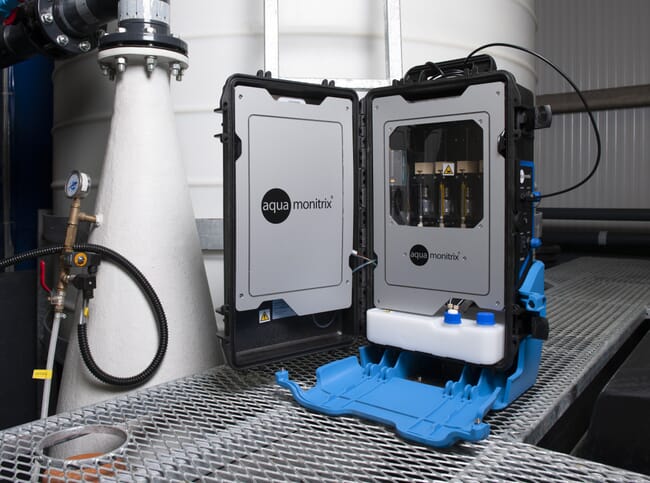
These are still targets, but we have added aquaculture, because when we started talking to water instrument suppliers, they told us about the unmet needs for real-time monitoring in RAS.
Aquamonitrix is an exceptionally sensitive analyser, and the detection range is spot-on for aquaculture. We can offer laboratory-quality accuracy at the limits of detection as low as 0.05 mg/L for nitrite (as NO2-) and 0.6 mg/L for nitrate (as NO3-). This has been verified in studies coordinated by the US Environmental Protection Agency in very challenging septic water matrices.
Why are ammonia/nitrite/nitrate levels so important in aquaculture and how can they be controlled?
Toxic nitrogen is one of the biggest operational concerns in RAS.
Nitrogen enters the system as protein in the feed. Depending on the feed conversion efficiency, about 20 to 25 percent of this accumulates in the animal tissues. The remainder is excreted as ammonia and organic nitrogen – through the fish gills or as urine. Other sources of ammonia in the system include decaying organic substances, such as uneaten food and dead animals.
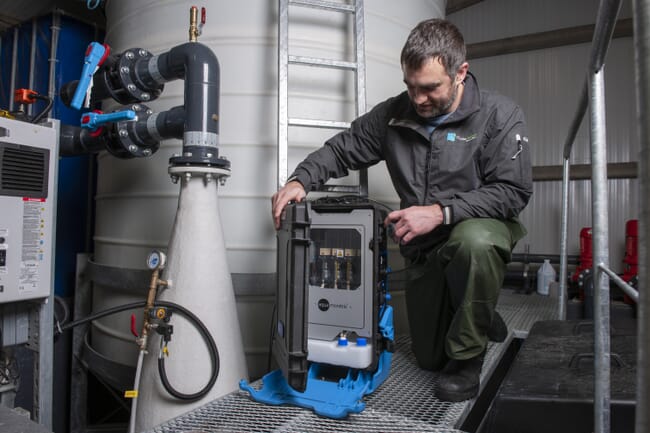
In its ionised form (NH4+) ammonium is non-toxic. However, as the pH increases, so too do the levels of toxic un-ionised ammonia (NH3). Un-ionised ammonia can cause gill and organ damage to aquatic species and it may result in mass mortalities at concentrations as low as 2 ppm.
In an RAS, the biofilter is the key piece of kit that allows water to be recycled. It does this by converting ammonia to less harmful nitrate in a two-step process. First, ammonia is converted to nitrite by one set of bacteria (these are known as the ammonia oxidising bacteria or AOBs). Nitrite is then converted to nitrate by a second set of bacteria (these are the NOBs – or nitrite oxidising bacteria).
A key issue for operators is that the nitrite intermediate is also poisonous. Nitrite poisoning follows closely on the heels of ammonia as a major killer in RAS systems.
When nitrite enters a fish’s bloodstream through the gills, it turns the blood brown in colour. So-called “brown blood” is limited in its ability to carry oxygen, which means that fish can suffocate, despite there being adequate oxygen concentrations in the water.
The safe upper limit for nitrite depends on the particular species being farmed, but it is close to zero for sensitive species such as salmon and trout. Even exposure to micro levels may cause immune system damage and leave species more prone to secondary diseases.
Aquamonitrix enables RAS managers to track nitrite as it increases with feeding over the course of the day, and then decreases during the night as feeding stops and the biofilter successfully converts to nitrate (see graphs from the Irish Marine Institute at the end of the article). The system can be configured to provide warnings and alarms when desired levels are breached – and this can flag any operational problems with the biofilter. RAS designers, manufacturers and operators can also use Aquamonitrix to test system tolerances.
The nitrate end-product is much less toxic than unionised ammonia or nitrite. However, high concentrations and long exposure times are believed to reduce growth, decrease survival rates and affect product taste. Again, Aquamonitrix can track nitrate build-up over time, and inform water exchange rates or other management strategies.
What are the main benefits of ensuring ammonia levels are kept as low as possible?
In February 2021, 227,000 salmon died at Atlantic Sapphire’s salt-water RAS plant in Denmark. According to the company, the mass mortality was due to higher than desired levels of nitrogen in the water. In a stock exchange statement, Atlantic Sapphire estimated the overall financial impact of the incident at $3 million.
Mass mortalities are the worst-case scenario. More general consequences of sub-optimal nitrogen management include poor feed uptake, sub-optimal biomass gain and feed conversion rates, increased susceptibility to disease and weaker, more stressed fish that fail to thrive post-tank transfer.
Consistently good water quality supports healthy, hungry fish that feed well and efficiently convert their feed to weight gain, which, in turn, increases the profitability of RAS operations.
Are there particular aquaculture systems that your sensor is best suited for use in?
Water quality tolerances are most critical in recirculating aquaculture systems with high water recycle rates, so this is where Aquamonitrix can have the biggest impact. Our current nitrate and nitrite analyser is designed for freshwater systems. But, because flushing with sea water can be used as a mitigation strategy for high nitrite levels, the analyser can handle salinity levels of 20 to 30 ppt. Our fully marine (saline) system will be available in the coming months. This will have applications in saline recirculating systems and for environmental monitoring in conventional sea-based aquaculture.
How does your sensor differ from existing means of measuring nitrite and nitrate?
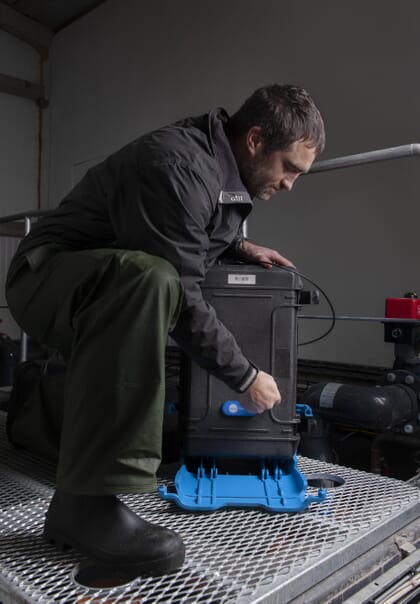
The current standard within the RAS industry is to perform nitrite analysis by spectrophotometry. This technique requires time-consuming sample preparation in a laboratory, using hazardous reagents to produce a colorimetric reaction, which, in turn, is read by the spectrophotometer.
While some autonomous analysers are marketed for nitrate or for nitrite measurement, their applicability is limited in real-world aquaculture systems, because the turbid environment, presence of organics and high nitrate concentrations can cause interference and undermine instrument reliability.
Aquamonitrix overcomes these challenges by combining the separation capabilities of ion chromatography with UV-LED detection. As greater ionic attractions cause nitrate to move through the chromatography column slightly more slowly, nitrite reaches the UV detector first. This allows for a highly specific and accurate readings of nitrite and nitrate, even when nitrate concentrations are high. The column also acts as a “trap” for colour, organics and air bubbles, which can adversely affect the performance of conventional analysers based on ISE, colorimetric or standard UV/UV-LED methods.
The sensor is also very robust against blockages and biofouling, which adds to its convenience for users.
Does it require extensive training or modifications of existing farm equipment to use?
Aquamonitrix is based on advanced technology, but one of its major benefits is operational simplicity for the user. No high-level technical skills are required. It can monitor and communicate results by IoT within a couple of hours of being unboxed. All that is required is a mains power source and inlet and outlet connections to the tank being monitored.
The system is compact, lightweight and portable and calibration remains stable for long durations – even when the analyser is moved to a different sample matrix. Servicing is straightforward and can be carried out by a local/agnostic service provider. There are long intervals between servicing, with only minor interventions required – such as occasionally topping up the reagent via a plug and play cartridge and emptying the sample waste.
We have also designed a platform called Datamonitrix, so that operators can view their readings in real-time via a user-friendly interface directly on their PC – from any location, at any time. The analyser sends both results and self-diagnosis information to this platform, so any need for intervention is flagged instantaneously. Alternatively, users can opt to have data transmitted to their existing data management or control system.

How widely has it been trialled in the aquaculture industry so far?
Users in the RAS sector include the Marine Institute, which is Ireland’s state agency for marine research and development. Aquamonitrix is also being trialled at the test facilities of Alpha Aqua – a Danish company that provides modular, turnkey RAS systems, designed to be eco-friendly and support high-standards of fish welfare.
What sort of feedback have you had from the industry to date?
Feed conversion efficiency is a key driver of profitability in aquaculture, so we are seeing strong interest from the industry. This is not surprising given the toxicity of nitrite and the difficulties in real-time monitoring before Aquamonitrix came to the market.
Has the success of these trials been verified by scientific studies?
Our work with commercial systems developers and operators is confidential. However, our work with the Irish Marine Institute is part of a European-funded R&D project called SALMSON Smolt, and a case study detailing the project is available on our website. We are also embarking on a large-scale European project that will use Aquamonitrix as part of a wastewater recycling system, incorporating aquaculture and aquaponics. We are always open to trials and research projects, particularly with feed companies and RAS system designers and users.
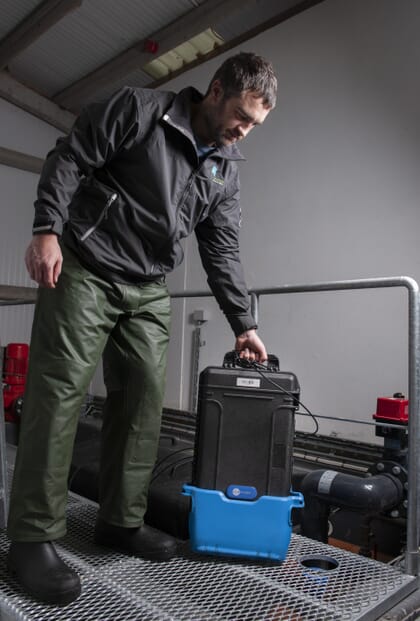
How much does each device cost/how long should it take for farmers to get a return on their investment?
The device is available in different configurations, so we recommend that interested parties complete our site assessment form and we can provide an accurate quote. We believe that the payback period could be as short as months. However, it will be influenced by the scale of the system and the value of the fish being farmed. Crucially, there is the peace of mind of avoiding that nightmare scenario of mass mortalities due to nitrite poisoning. In addition, the big wins would be in terms of higher feed conversion rates and healthier, larger fish. There is also less need for water exchange, which can be a cost to some operators, particularly if treatment is required and/or there are charges for wastewater discharge. Other benefits include the savings on laboratory time, costs and use of hazardous reagents. Attracting and retaining skilled laboratory technicians is always a challenge.
How do you see the company/device growing its footprint in the aquaculture sector in the coming years?
We are excited about the potential of the RAS sector. A 2019 RaboResearch Food & Agribusiness reported that the number of proposed RAS projects was increasing “day by day”, with the majority of ventures focused on salmon farming. Aquaculture 2.0: RAS Is Driving Change identified more than 50 newly announced RAS projects. The total estimated production of these ventures up to 2030 was 700,000 tonnes – equivalent to 25 percent of the expected growth in total salmon supply to 2030.
We expect the sector may have some teething problems, but we believe that Aquamonitrix can become an important tool in helping to manage RAS operational risks.
How do you plan to achieve this growth?
We’ve already received commercialisation funding from the European Union and support from Enterprise Ireland. At the moment, we are growing organically, working with distributors and manufacturers to expand our footprint in key territories. We are open-minded about the future. If we were to consider venture funding, we would be interested in an equity partner with strong sectoral or market knowledge that could help to propel our growth journey.
-
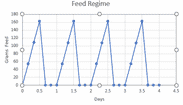
Nitrite levels follow a daily cycle, closely tracking the feeding regime -
![]()
Nitrite levels follow a daily cycle, closely tracking the feeding regime -
![]()
Over time, accumulated nitrate levels have increased with biomass gain -
![]()

